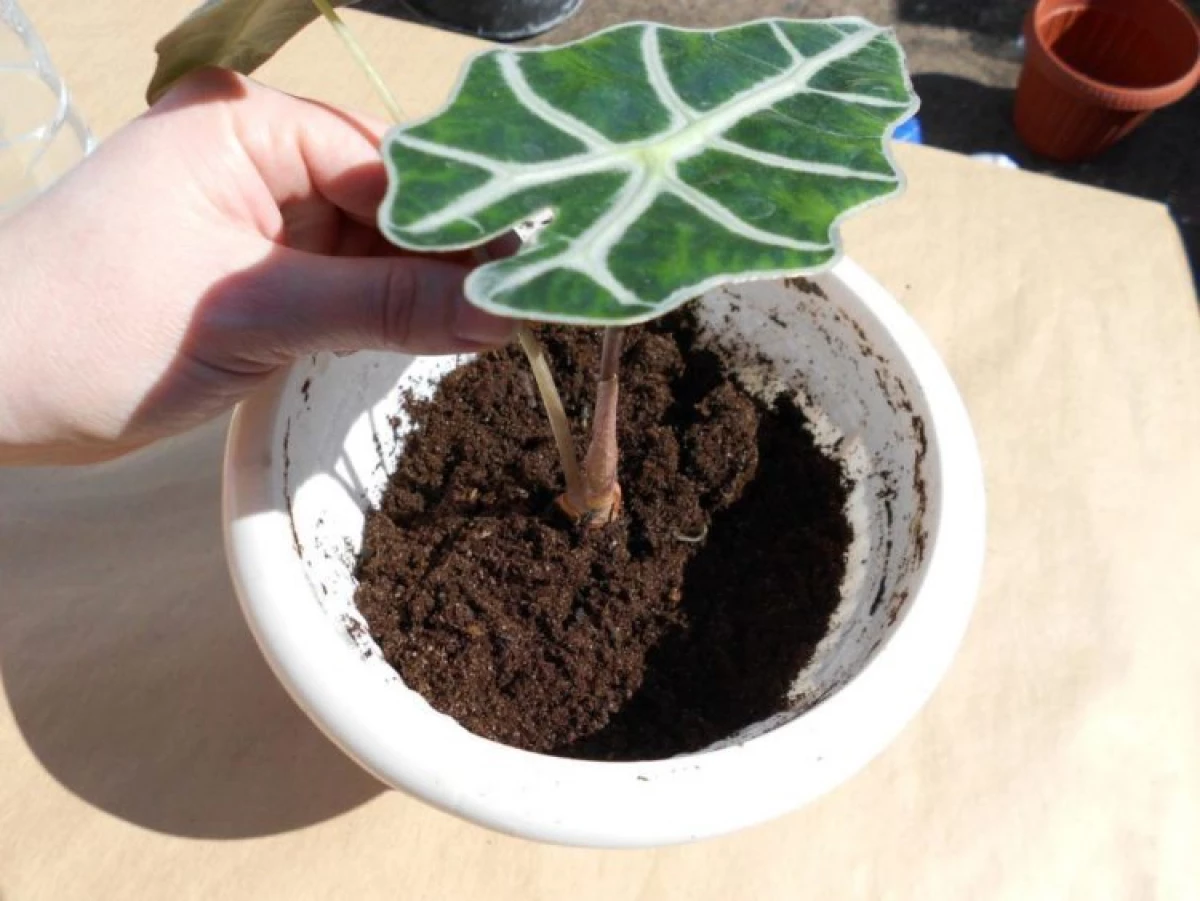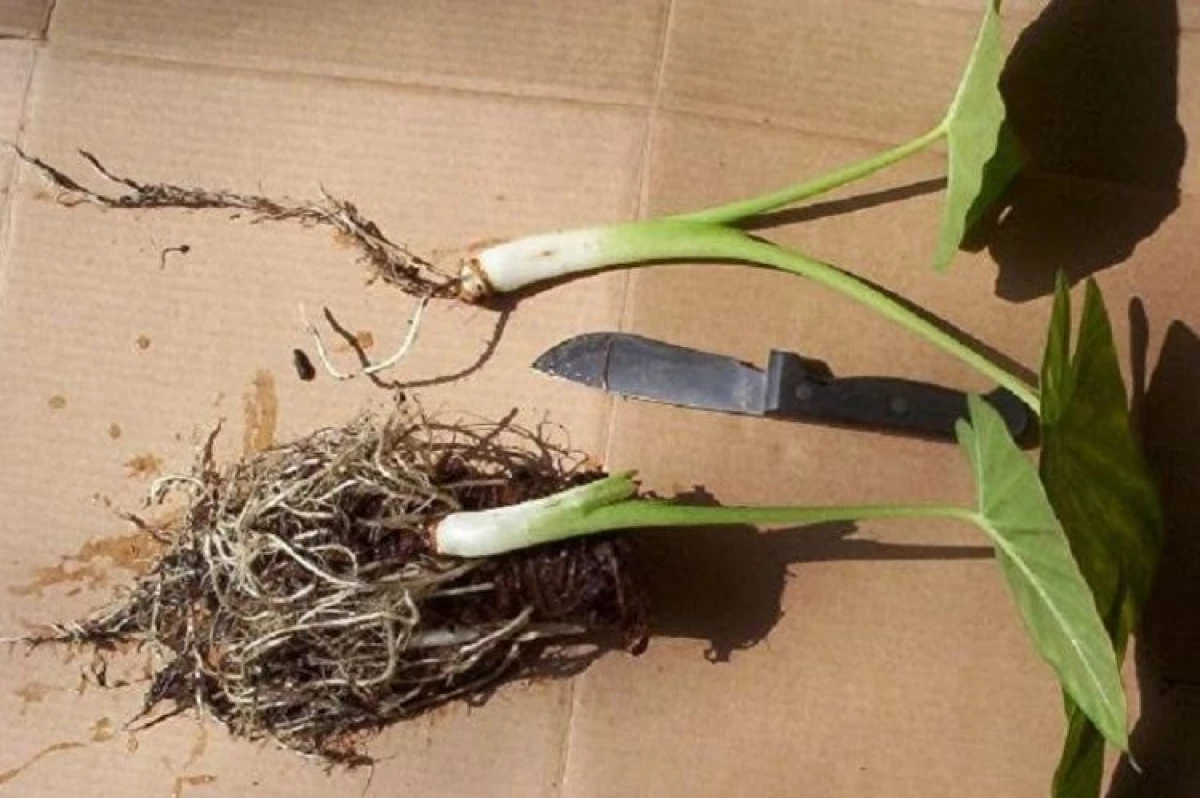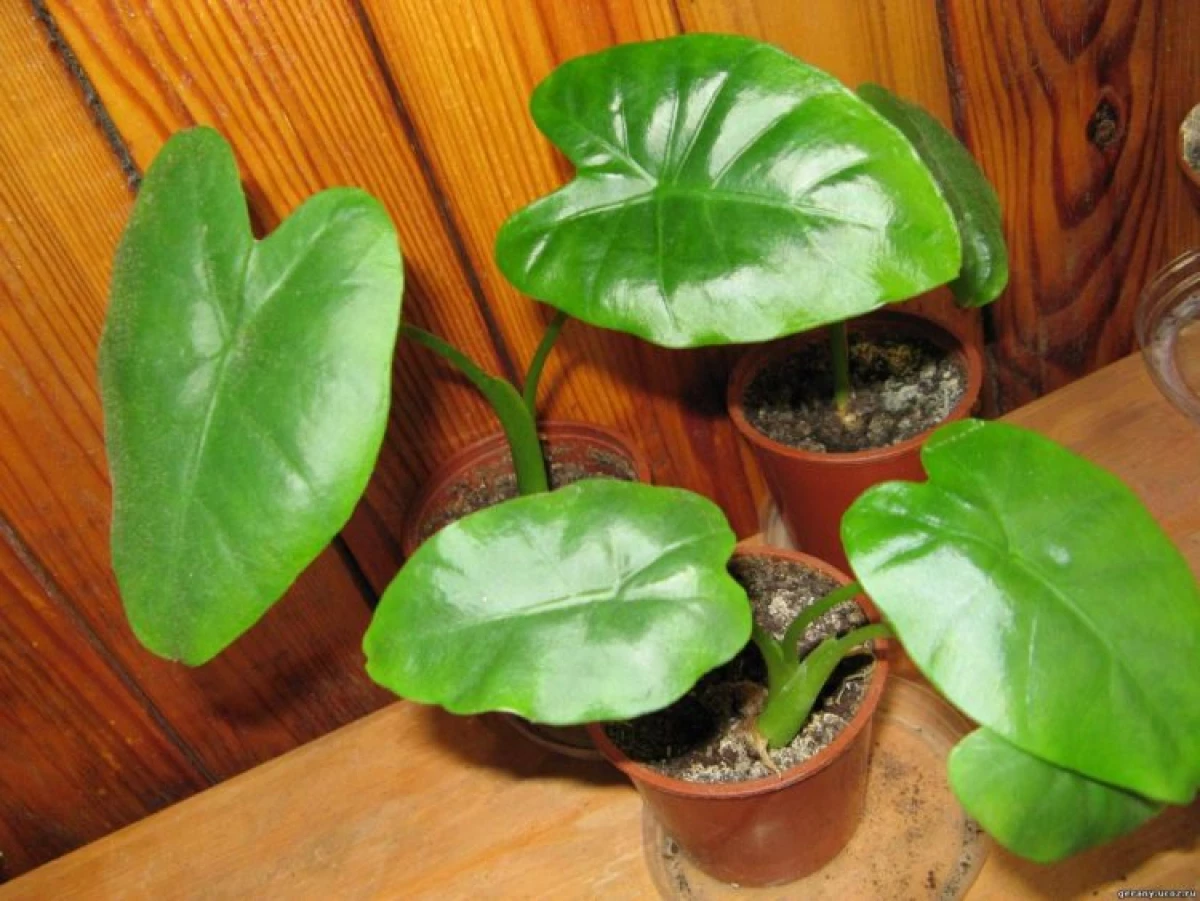
If the flower came across at home and pleases with its beautiful view not only the owners, but also guests, there will always be wisp to make the same. Today we will tell how to propagate at home this is a tropical plant, to finally keep the promise given to the best friend, and give her a little alocycle.
There are 4 methods for the reproduction of this plant, but not each of them is suitable at a specific point in time to a certain type of plants.
How to multiply this flower?
In natureIn natural conditions, alocation multiplies predominantly in a vegetative way, forming subsidiaries next to the maternal.Also holds self-seeds from seeds, which are matured in orange berries - alocation fruits.
At homeThe flower seed seeds get extremely difficult, so the flower products are resorted to simpler and efficient ways of obtaining new plants:
- Division bush.
- Reproduction sheet.
- Tubers (kids).
Consider in more detail each of these methods.
How to propagate?
Leaf
- To stimulate the growth of the roots, the cuttings are better to hold 2-3 hours in the corneser solution.
- After that, the sheet is placed in the container with the ground to a depth of 2-3 cm, the ground is spilled well and are covered with a polyethylene transparent package or a cropped plastic bottle (depending on the tank pot and the size of the sheet.). It turns out a small greenhouse that will create the necessary microclimate.
- It is necessary to water after 1-2 days, not allowing drafts.
In a month, you can expect the appearance of small roots.
Kids (child tubes)In the spring, from March to May, many varieties of alocation near the parent plant are formed by tubers. Often they look well on the surface and can be separated, without removing the plant from the pot.
- Tubers are separated from the uterine plant with a sharp knife.
- For the germination of children most often used moss sphagnum. It should be placed in it and then regularly moisturize it throughout the germination period. The required temperature is not lower than +22.
- To maintain the necessary humidity of air to the container, the polyethylene package is put on and mini-guy is formed.
Only after the germination of the tuber and turning the first sheet, the young plant is transplanted into a full-fledged soil.
The division of rhizomes
- The plant is removed from the pot and gently, trying not to damage the roots, remove the ground. If the substrate is too dense, it is blurred by water.
- The liberated rhizome with the help of a sharp knife is divided so that every Delleka has a rosette of leaves, or a growth kidney. Sections of sections are carefully treated with poured charcoal and leave for drying within an hour.
- After drying the cut, alokazia is planted into the appropriate soil mixture and soil shed well.
During the week after the procedure, the ambient temperature should not be descended below +23 degrees. In addition, you need to regularly spray the plant as long as the leaves do not get elasticity again.
SeedsAs already mentioned, the complexity of the breeding of alocation seeds is that it is extremely difficult to get the latter. With loss of moisture, the seeds quickly lose their germination, so it is necessary to sow them immediately after collecting.

However, if you still managed to get seeds or independently get them out of fruits, you can safely begin the case.
- Prepare the soil mixture of peat or leaf ground with sand. Glubin sowing is small.
- After disembarking seeds, the container is placed in a cellophane package, in which they support the necessary humidity, periodically spraying the soil.
- So that the seeds sprout maintain the temperature of about 22-24 degrees and do not forget to ventilate the greenhouse.
- With the appearance of 2 real leaves, shoots dive.
- When seedlings reached 8-10 cm in height, they are again transplanted into the pots, with a diameter of about 7 cm.
There is another modern way to germinate seeds - in plastic bags with a fastener.
- Fill the bag with wet perlit, put the seeds there, and then inflate the air package and close the lock. Make sure that the ratio of perlite and air in the package is 5% and 95% respectively.
- Daily ventilate the package until the alocation seeds are good. The percentage of germination can be increased if you place a bag of bright light and ensure the daily temperature of about 27-28 degrees. At the same time, at night, the thermometer's column should not fall below 20-22 ºС.
- The period of germination of seeds fluctuates from a few days to three weeks.
What difficulties may arise?
In addition to the bad germination of seeds, difficulties may occur when the rhizoma is divided. We are talking about the extraction of the plant from the old pot, as the roots are practically growing into it. When this problem appears, try using a wooden stick or pencil.Subsequent care for young plants

- The main and basic requirement is air humidity. The optimal indicator is 80%.
- Alocation does not like dust, so you need to regularly wipe it with a damp cloth or arrange a warm tropical shower from the shower in the bathroom.
- Twice a month, rooted seedlings are fed by nitrogen fertilizers in order to stimulate the growth of green mass. However, the feeding starts only when at least 3 unfolded leaves are formed.
- The frequency of watering depends on the time of year. In the summer, the plant is watered 3 times a week, in winter - once.
- Young alocories require an annual transplant and, as they grow, gradually relocating in heavier sustainable pots.
In compliance with all the requirements for the care of the tropical guest, it willingly multiply and practically does not ill.
